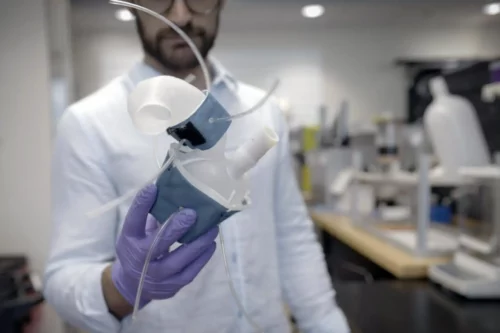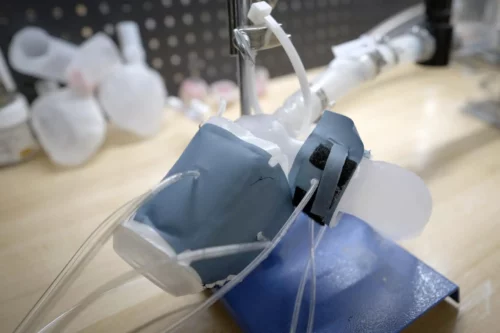A team of researchers at Massachusetts Institute of Technology have developed a 3D printed heart that can mimic the real beating heart.

No two hearts beat alike. The size and shape of the heart can vary from one person to the next. These differences can be particularly pronounced for people living with heart disease, as their hearts and major vessels work harder to overcome any compromised function. But technology is being evolved on a day to day basis and is therefore at a stage where precision has become absolute.
Massachusetts Institute of Technology (MIT) engineers are hoping to help doctors tailor treatments to patients’ specific heart form and function, with a custom robotic heart. The team has developed a procedure to 3D print a soft and flexible replica of a patient’s heart. They can then control the replica’s action to mimic that patient’s blood-pumping ability.
To mimic the heart’s pumping action, the team has fabricated sleeves similar to blood pressure cuffs that wrap around a printed heart and aorta. The underside of each sleeve resembles precisely patterned bubble wrap. When the sleeve is connected to a pneumatic system, researchers can tune the outflowing air to rhythmically inflate the sleeve’s bubbles and contract the heart, mimicking its pumping action. Researchers can inflate a separate sleeve surrounding a printed aorta to constrict the vessel. This constriction can be tuned to mimic aortic stenosis — a condition in which the aortic valve narrows, causing the heart to work harder to force blood through the body.

Finally, the team used an actuated printed heart to compare implants of different sizes, to see which would result in the best fit and flow — something they envision clinicians could potentially do for their patients in the future. Researchers believe patient-specific replicas could help develop and identify ideal treatments for individuals with unique and challenging cardiac geometries.
Reference: “Soft robotic patient-specific hydrodynamic model of aortic stenosis and ventricular remodeling” – 22 February 2023, Science Robotics.
DOI: 10.1126/scirobotics.ade2184






